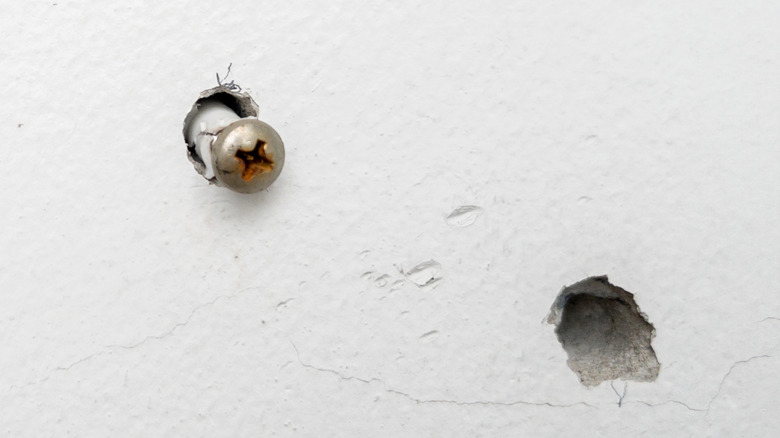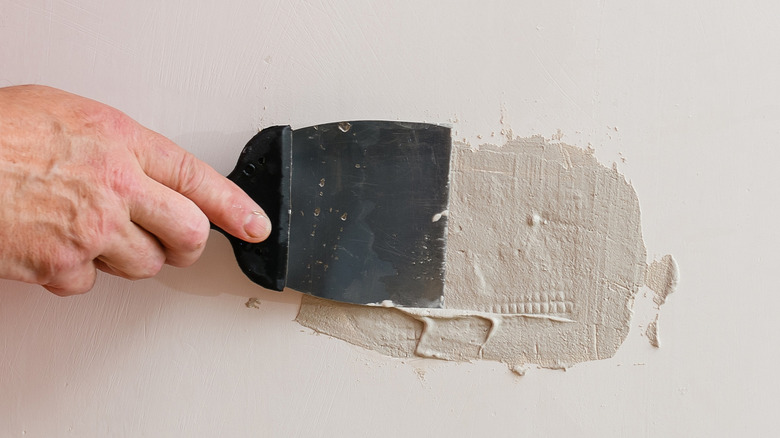Easily Fix Small Wall Holes In A Pinch Using Items You Already Own
Why are there still ugly holes when you have what you need in your home to fix them right now? There's no need to head to the home improvement store when you have these common household necessities. Get started filling those small holes with a quick trip to your bathroom and grabbing toothpaste and a bottle of aspirin. (The aspirin is for eliminating the flaws in the wall, not the headache caused by those annoying holes.) Yep — toothpaste and aspirin.
Begin by taking a standard white aspirin pill and crushing it to a fine powder. Then squeeze out about a ½-inch line of toothpaste into the aspirin powder and mix the two together thoroughly. Using a finger, wipe the mixture into the small hole and allow it to dry. Rub a paper towel over the dried mixture to remove any excess.
Two other very similar fixes to the toothpaste hack are to mix white glue and baking soda together and apply it the same way. When it dries, smooth it out with sandpaper (the glue mixture is tougher than the toothpaste material) or if you don't have any around, a green scouring pad from your kitchen will work just fine. Super glue and baking soda mixed together will also do the trick (and add substantial strength to the repair) but use gloves and a putty knife for the application to avoid gluing your fingers to the wall! You will need use sandpaper afterward to remove excess, as the cyanoacrylate-based super glue dries very hard. These options will likely only work for small holes and won't look particularly attractive, so you'll need to take more steps for larger holes.
Larger holes require proper materials
Repairing walls with holes about the size of a dime and larger will likely need to be fixed in the more traditional way, but never fear — you can fix a hole in the wall no matter the size! You'll need spackling paste, a mesh wall patch, sandpaper, and a putty knife or something similar. A wall patch is a mesh you place over the hole in your wall. It holds the spackle in place over the void in the wall. Some wall patch material is made with an adhesive on the back which makes sticking it to the wall even easier. Mix the spackling paste with water until it's about the consistency of peanut butter. Remove any torn or rough edges of the hole with sandpaper.
Apply the wall patch by cutting it a little larger than the hole, wetting the patch with the spackle paste and putting it over the hole. Then trowel the paste over the opening leaving a smooth layer of paste. When it is dry, sand it smooth. As it dries, the spackle compound may shrink, requiring a second coat. If so, go ahead and apply a freshly mixed application of the paste. Allow it to dry and sand it smooth.
While filled nail-sized holes are nearly invisible, larger fixes unfortunately are not. You'll need to apply paint to fix the patched repair. Feather the paint around the repair, blending the fresh paint to hide the imperfections. It may require a couple of applications as the spackle will absorb the paint differently than the existing wall with the first coat.

